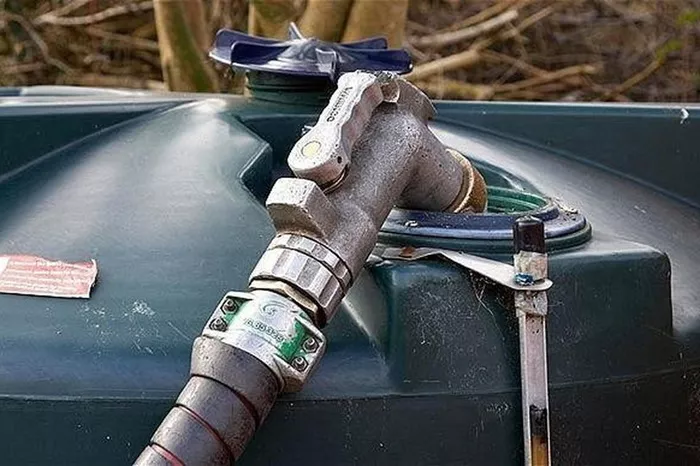Fuel oil is a crucial resource for heating homes, businesses, and powering machinery. Understanding its lifespan is essential for efficient usage and storage. This article delves into the factors affecting fuel oil longevity, storage best practices, signs of degradation, and ways to extend its shelf life.
Understanding Fuel Oil
Fuel oil, also known as heating oil, is derived from crude oil and is used primarily for heating. It comes in various types, such as No. 2 heating oil, diesel fuel, and kerosene. The longevity of fuel oil can vary significantly depending on its type and storage conditions.
Types of Fuel Oil
No. 2 Heating Oil: Commonly used in residential heating systems.
Diesel Fuel: Used in diesel engines and some heating systems.
Kerosene: Used for space heaters and lamps.
Each type has specific characteristics and storage requirements that affect its shelf life.
Factors Affecting Fuel Oil Longevity
Several factors influence how long fuel oil can last before it degrades:
1. Storage Conditions
Proper storage is crucial for maintaining fuel oil quality. The following conditions can significantly impact its longevity:
Temperature: Extreme temperatures can cause condensation, leading to water contamination.
Light Exposure: UV light can accelerate the breakdown of fuel oil.
Air Exposure: Contact with air can lead to oxidation, causing the fuel to degrade.
2. Quality of the Fuel
The initial quality of the fuel oil also plays a significant role in its longevity. High-quality fuel oil with fewer impurities tends to last longer.
3. Additives
Additives can enhance the stability of fuel oil. These chemicals help prevent oxidation, microbial growth, and sediment formation.
4. Contamination
Contamination by water, dirt, or other substances can significantly shorten the lifespan of fuel oil. Water, in particular, can lead to microbial growth and fuel breakdown.
Typical Shelf Life of Fuel Oil
The shelf life of fuel oil varies based on the type and storage conditions. Here are general estimates:
No. 2 Heating Oil: Typically lasts 18 to 24 months when stored properly.
Diesel Fuel: Can last 6 to 12 months, but with stabilizers, it can extend to 18 to 24 months.
Kerosene: Usually has a longer shelf life, lasting up to 5 years with proper storage.
Storage Best Practices
To maximize the lifespan of fuel oil, follow these storage best practices:
1. Use Proper Storage Tanks
Use tanks specifically designed for fuel oil storage. These tanks should be made of materials resistant to corrosion and designed to minimize air and light exposure.
2. Regular Maintenance
Regularly inspect and maintain storage tanks to prevent leaks and contamination. Clean the tanks periodically to remove sediment and sludge.
3. Use Fuel Stabilizers
Add fuel stabilizers to the fuel oil to slow down the oxidation process and prevent microbial growth. These additives can significantly extend the shelf life of the fuel.
4. Store in a Cool, Dark Place
Store fuel oil in a location that is cool and away from direct sunlight. This helps prevent temperature fluctuations and light exposure, which can degrade the fuel.
See also: What Colour Is No. 2 Fuel Oil?
Signs of Degradation
Recognizing the signs of degraded fuel oil is crucial for preventing damage to heating systems and machinery. Here are some indicators that fuel oil may have gone bad:
1. Changes in Color
Fresh fuel oil is typically clear or slightly yellow. If the fuel oil appears dark or cloudy, it may have degraded.
2. Sediment and Sludge
Sediment or sludge at the bottom of the storage tank is a sign of degradation. This can clog filters and damage heating systems.
3. Strange Odors
Degraded fuel oil may emit a foul or rancid odor. This is often a sign of microbial contamination.
4. Poor Performance
If heating systems or machinery are not performing efficiently, it may be due to degraded fuel oil. Poor combustion and increased smoke emissions are common symptoms.
Extending the Shelf Life of Fuel Oil
There are several ways to extend the shelf life of fuel oil and ensure it remains usable for as long as possible:
1. Regularly Test the Fuel
Periodically test the fuel oil for signs of degradation. This can help identify issues early and take corrective action.
2. Use High-Quality Fuel
Purchase fuel oil from reputable suppliers to ensure high quality. High-quality fuel is less likely to degrade quickly.
3. Monitor and Control Storage Conditions
Keep a close watch on storage conditions, including temperature and humidity levels. Use temperature-controlled storage facilities if possible.
4. Use Biocides
Add biocides to the fuel oil to prevent microbial growth. Microbes can thrive in fuel contaminated with water, leading to sludge formation and degradation.
The Impact of Degraded Fuel Oil
Using degraded fuel oil can have several negative consequences, including:
1. Damage to Heating Systems
Degraded fuel can clog filters, nozzles, and injectors, leading to inefficient combustion and potential damage to heating systems.
2. Increased Maintenance Costs
Frequent maintenance and repairs due to degraded fuel can increase operational costs. Replacing damaged components can be expensive.
3. Reduced Efficiency
Heating systems and machinery running on degraded fuel oil often operate less efficiently, consuming more fuel and increasing energy costs.
4. Environmental Impact
Burning degraded fuel oil can result in higher emissions of pollutants, contributing to environmental pollution.
Conclusion
Understanding how long fuel oil lasts and how to properly store and maintain it is crucial for efficient usage and cost savings. By following best practices for storage, regularly testing the fuel, and using stabilizers and biocides, you can extend the shelf life of fuel oil and ensure it remains in good condition. Recognizing the signs of degradation and taking prompt action can prevent damage to heating systems and machinery, reduce maintenance costs, and minimize environmental impact. Proper management of fuel oil not only saves money but also contributes to a more sustainable and efficient energy system.
Related topics:
Can You Use No. 2 Fuel Oil In A Diesel Engine?

